- Home
- Dean Koontz
Writing Popular Fiction Page 7
Writing Popular Fiction Read online
Page 7
This is the right way to establish the challenges in a hypothetical heroic quest: Your hero is stubborn, bullheaded but a likable fellow who won't quit until the job is done. He accepts an assignment from a White Magician to find the magician's daughter who has been kidnapped and carried off by a Black Magician, an evil sorcerer. When the hero reaches the borders of the warlock's kingdom, he receives a supernatural warning to stay away. Being the kind of man he is, he ignores the warning and plunges ahead. Now, when the warlock dispatches legions of the living dead and countless other forces to kill the hero, the successive battles are due to cause and effect: the prime cause is the hero's personality.
Too often, writers do not develop cause and effect, but confront their heroes with monsters and supernatural forces in a random fashion, so that their triumphs over each are not, as they should be, small triumphs over the villains as well.
Furthermore, a sword and sorcery hero must-with rare exception-be all-powerful, thereby negating any possibility of real and lasting injury to him. The suspense is nil. A superman who has no problems with which the reader can identify is largely unsympathetic. The result, frequently, is cardboard characterization.
There are, then, two ways to avoid this trap. First, you can use a hero who has obvious flaws and physical limitations, so that each fight he engages in is dangerous, each wound he sustains is serious and painful. Though the basic requirements of the sword and sorcery form make such a hero less acceptable than his strongman brothers, it can be done by an established sword and sorcery writer or by talented new authors in the field. Second, you can opt for a strongman lead, but surround him with a few intimates of whom he is inordinately fond; these secondary characters will be far more mortal than your hero, appealing to the reader, so that when one of them dies or is hurt, the reader will be emotionally touched by the incident. And, directly, the hero can be made to seem more real and human through his own grief at the friend's fate; if he cannot be physically harmed, himself, he can at least be emotionally damaged. Fritz Leiber, in his Gray Mouser stories and most notably in "111 Met in Lankhmar" in his book Swords and Deviltry, makes fine use of this second technique.
In sword and sorcery fantasy, all of the character motivations in Chapter One are useful. A hero may set out on a quest to recover a kidnapped maiden because he is being paid to do this (Greed) or because he is attached to her and wants her for his own (Love). He may seek out a fabled magician who holds the key to his parentage and fortune (Self-discovery), or go after a magical device (Greed for Power). He may begin a quest because he is beholden to a king, queen, or sorcerer (Duty), or because he has been angered by the acts of another warrior or sorcerer or king (Revenge). Perhaps a curse has been placed upon him, and he must venture into strange lands in search of the magic to relieve him of this spell (Self-preservation). Perhaps, initially, he strayed into a private estate owned by a warlock (Curiosity), had a spell cast upon him, and was ordered on a quest (Self-preservation). The possibilities are endless, the combinations complex. The only warning is: As in the other genres, the hero must be motivated by more than one thing, by more than a single obsession.
No writer I can think of-aside from Fritz Leiber, occasionally-currently writes sword and sorcery fantasy for anything other than the sheer vitality and color it offers. It can transport the reader away from his cares as well as any other genre can, if he is predisposed to it. And if, once he's finished the final page, the reader has gotten nothing more from the experience than solid entertainment-no grain of philosophy, no new understanding-who is to say that the book did not deliver enough? We are all, more than anything else, story tellers, not moralists.
EPIC FANTASY
Epic fantasy combines dark fantasy with sword and sorcery, then works these diverse elements into a story with the scope, theme, characterization, and plot of a serious modern novel. As in dark fantasy, the element which is being contested between heroes and villains is something of great import, a fundamental clash between good and evil for the future of all mankind. The epic story takes, as its second concern, the plights of its individual characters; unlike the sword and sorcery novel, the epic would never be entirely, or even chiefly, concerned with the rescue of a single maiden, the banishment of a particular curse, the retrieval of one magic totem. The maiden, the curse, and the totem will probably all play important roles in the epic, but no one of them will be the entire core of the story.
Epic fantasy, in short, demands three qualities: an especially rich tapestry of characters, several sub-plots to add depth and breadth of vision to the main storyline, and a background of considerable "alien" detail. Each of these things is, really, one of the original five elements of category fiction; yet each deserves a closer look, according to its function in the epic fantasy novel.
Characters. In the epic, you will have one lead protagonist, of course, in order to focus your reader's attention and concern. However, in addition to this hero, the epic should contain at least half a dozen secondary protagonists who are nearly as important as your hero. These will play less crucial parts in solving the major story problems, and they will appear onstage less often than your lead, but they will be sympathetic people with whom your reader can identify and about whose struggles he can care. For instance, if your epic hero is to be a young king whose empire is beset with strife and whose enemies have let loose a plague of evil magic on his subjects, your secondary protagonists might include these: the Court Jester, a funny little man on the surface, a sensitive and romantic man beneath the greasepaint, a man who deeply loves his king and insists on going along on the Great Quest, no matter how dangerous that journey is; The king's Chief Knight, an aging warrior who is no longer much good in the heat of battle but whose genius for strategy is unequalled; a Young Knight in love with the king's sister, who has been taken by the adversary's hired warlocks; the king's Lady, a beautiful, tough minded woman who appears quite fragile but can wield a dagger and a whip with ease.
Furthermore, these secondary characters must all have major character problems or hangups which they work out during the course of the novel. This is a requirement of all category fiction, of course, but it is even more essential in the epic fantasy than in the other genre forms. The epic is broad and lengthy; characters lacking this special depth cannot hold a reader's sympathy and interest for all this extra wordage. Taking the set of protagonists mentioned in the previous paragraph, let's see how they could be made richer with the addition of these deeper character problems: the Court Jester wants to go on the Great Quest to help his king, but he has always been a coward and shies from dangerous circumstances. At the same time, he realizes that this is the best chance he will ever have to overcome this flaw that has forced him into a life of placation as the "funnyman" no one can get angry with. The Chief Knight was, all through his youth and middle-age, a man who judged other men according to their strength and prowess in a fight. Now that age is sapping most of his own strength, he must, during the Quest, re-think his long-held criteria for manhood. The Young Knight, in love with the king's sister, has always placed great value on "virtue" and especially on sexual virtue in the woman he will marry. Now, the king's sister has been kidnapped by unprincipled people and is very likely a member, against her will, of the evil king's court harem. Her innocence has been erased, her virtue destroyed. The young knight must now decide which is most important-his love for the girl, or his need for a virgin bride. The king's Lady has always taken pride in her ability to defeat men in most competitions. Now, however, on this rugged trek and dangerous quest, she is faced with situations where only male strength can save her.
At first humiliated, and then enraged, she must eventually come to terms with this new and unavoidable dependence.
Just as the secondary protagonists must have character flaws, so must the lead in an epic fantasy. The sword and sorcery hero, the strongman who can always be depended on to save the day, is rarely acceptable to the epic audience and should be avoided at all costs.
/>
Villains should also number half a dozen or more, in addition to the lead antagonist. If your major villain is the evil king, then your secondary villains might be his number one Black Knight, his castle Warlock, his twisted and despicable brother who is the spawn of a human-demon love tryst, and so forth.
The character clashes between a large cast of heroes and villains provides that breadth of vision which, as mentioned earlier, puts the epic fantasy in the same class as the really important modern novels.
Sub-Plots. The major storyline, in an epic, usually cannot sustain the entire book without becoming tedious and strung-out. Therefore, the writer must explore every solid, potential sub-plot, any secondary storyline which can also provide suspense. The best sub-plots are not grafted onto the main story, but arise naturally from the personal problems of the secondary protagonists, which we discussed earlier. For example-if we remain with the hypothetical fantasy novel that has supplied us with examples so far-the story of the Court Jester's cowardice would provide an excellent sub-plot. Suppose that one of the good king's knights is a rather unpleasant character named Rollo, and suppose that Rollo is the only one in the entourage to realize that the Jester's wit is a cover for weak knees. If Rollo is developed as a first class bully, who constantly harasses the Jester, we have a good, secondary sub-plot in this man-to-man confrontation. During the course of the book, the Jester would take less and less guff from Rollo, until they were finally matched in a duel which, naturally, the Jester would win, perhaps not because of his strength but because of his superior cunning and determination.
In the epic fantasy novel, the length can easily support a major sub-plot for every secondary protagonist.
Alien Background. Unlike the dark fantasy, the epic fantasy takes place in a completely imaginary world; it bears little or no resemblance to present-day society and is rich with its own customs, religions, languages, countries, and geographical peculiarities. However, the epic is also unlike sword and sorcery, in that action is not the end-all and be-all of its existence; the background, here, must be as carefully detailed as any in science fiction, and according to the same methods that a science fiction background is worked out. The only difference, of course, is that the epic fantasy does not have to have, as its setting, a world that is a logical, scientifically justified outgrowth of today.
With these things in mind, you would do well to read carefully the work of J.R.R. Tolkien whose Lord of the Rings Trilogy (The Fellowship of the Ring, The Two Towers, and The Return of the King) is perhaps the greatest series of epic fantasies ever written. Other popular epic fantasy novelists are Mervyn Peake (Titus Groan, Gormen-ghast, and Titus Alone) and Talbot Mundy (Tros, Helma, Liafail, Helene, Queen Cleopatra, and The Purple Pirate).
CHAPTER THREE Suspense
Of the seven major categories of modern fiction, the mystery and suspense forms-especially suspense-provide the writer with the greatest opportunity for financial success. Most hardcover and paperback trade book (Trade books are the kind sold in general bookstores, department and drug stores, etc.) houses publish regular mystery and suspense lists; and a substantial portion of the novels labeled as "general" and "mainstream" fiction are actually suspense novels. The leading best-seller lists often include at least one mystery and almost always two or three suspense titles, though these last may not be clearly labeled as such. The Mystery Guild and the Detective Book Club reprint published novels for their members, providing extra income for established suspense and mystery writers; and the Literary Guild, Book-of-the-Month Club, Doubleday Bargain Book Club, and other large, mailorder discount organizations feature mystery and suspense titles more often than they do those of other genres, paying extremely well for book club rights. And the percentages of mystery and suspense novels sold for motion picture production, while not exceedingly high, are nevertheless substantially above the percentages of film rights sales in other categories.
In addition, while there are some series characters to be found in the science fiction, fantasy, Western, and erotic genres, none of these categories support the quantity and range of series characters that the suspense and mystery genres do. Series novels, like Ian Fleming's James Bond books, in which the same characters and backgrounds are used through several books, are important monetarily and creatively, because the series character allows you to build a regular and faithful audience that would be harder to come by if every story you wrote were unrelated to the last. Category readers pay for escape; if they like a character who appears in two dozen books, the familiarity of background and story helps them "settle into" each successive novel more quickly than they got into the last. Also, by picking up a novel in a series they enjoy, they are taking less of a chance of wasting their reading time on something they cannot finish or, having finished, wish they had not.
Successful mystery series include Ross MacDonald's Lew Archer novels-many of which received lengthy runs on the best-seller lists-and Richard S. Prather's Shell Scott books. Prather's agent (Scott Meredith) some years ago got him a million dollar contract with Pocket Books to write several new Shell Scott novels over a period of years; but Prather has earned far more than that from the series, which has been selling steadily since 1950. Successful suspense series include Donald E. Westlake's Parker novels, John D. MacDonald's Travis McGee novels, Edward S. Aarons' Sam Durell stories, Donald Hamilton's Matt Helm adventures, and Philip Atlee's Joe Gaul espionage capers. Wide reading in both these fields, not only to help you learn the form but also to help you learn the names and careers of established series characters, is essential. (You may also find Who Done It: A Guide to Detective, Mystery and Suspense Fiction by Ordean A. Hagen (R. R. Bowker) helpful for its list of mystery and suspense characters.)
This book separates mysteries and suspense novels into two separate categories, as the differences between them are few but fundamental. First of all, in the mystery the villain is always unknown until the end: a major purpose of the narrative is to deduce, by degrees, the identity of the murderer or thief. The unveiling of the villain is the whole dramatic focus, forms the entire climax, and comes near the very end of the novel. In a suspense novel, however, the villain is often identified at the outset-at least to the reader if not to the lead character, though most often to both-and the story interest comes from the reader's anticipation of various disasters befalling the protagonist.
Donald E. Westlake's excellent suspense novel, Slay-ground (published under the pseudonym Richard Stark), is a good example of this point. In chapter one the professional thief who is the protagonist, Parker, robs an armored car, survives the wreck of a getaway car, and flees with a suitcase of money into an amusement park which is closed for the winter. Unobserved by anyone except two mafia types and the crooked policemen they are paying off, his predicament would, at first, seem only slightly serious. Parker soon discovers that the park is ringed by a moat and an unscalable fence, and that he can leave only as he entered, through the main gate. That route is blocked by the mafia and the crooked cops who intend to enter the park after sundown, locate Parker, kill him, and take the stolen money. The bulk of the novel concerns the manhunt, Parker's skillful evasions, and the use of the amusement park rides and shows as deadly traps for the mafia interlopers. The villains are all known. The excitement comes from three main questions: (1) Will they find Parker? (2) Will they kill Parker? (3) Will Parker get away with the money?
In those rare suspense novels where the villain's identity is withheld from the reader, the revelation, when it comes, is secondary to the resolution of the hero's predicament: once the reader has found who, he is mostly interested in how to stop him. A good example is my own Chase. The story concerns a Medal-of-Honor-winning Vietnam veteran who shuns the media spotlight and public acclaim; he was an unwilling participant in a never-discovered My-Lai-type massacre and is fighting a battle with his own guilt, aware that this war crime more than offsets the bravery, under other circumstances, which earned him the Medal. In chapter one, he comes
upon a killer, in the lover's lane overlooking his hometown, who has stabbed one boy to death and is menacing a young girl. He grapples with the killer, frightens him off, saves the girl and finds himself front-page news again, against his will. Not only does this exposure put him under more emotional stress, but it quickly tips off the lover's lane killer as to the identity of the man who stopped him from killing the girl. The disgruntled psychotic sets out to murder the hero for interfering. This time, partly because he doesn't want the notoriety of police protection, and partly because he isn't altogether believed when he tells of the threats against his life, the hero decides to find the killer where the police have failed. Either he locates his man, or he becomes front-page news again-this time as the psycho's victim. The madman's identity is withheld from the reader, but not for the purpose of mystery. When the hero finally learns who the unseen adversary is, the revelation is less of interest to the reader than what will follow it: the dangerous and suspenseful confrontation between protagonist and antagonist.
Mystery and suspense differ in another important manner. A mystery novel usually opens with a single, major crime and, more often than not, contains no other murders. The hero sets out to solve this dirty work and takes two hundred pages of sleuthing to do it. If other murders do occur, they come about by surprise, with little or no build-up to titillate the reader; these secondary murders, then, become additional twists in the plot, complicating the protagonist's job. By contrast, the suspense novel withholds its major violent incident until the end. More often than not, the villains' intended crime is never pulled off, for the lead character manages to foil his antagonists. In short, the mystery is characterized by the word "solve," while the suspense novel could be summed up in the word "anticipate." This means that the most dramatic narratives, full of the most hair-raising escapes and encounters, will be more likely found in suspense than in mystery where the worst has happened at the outset.

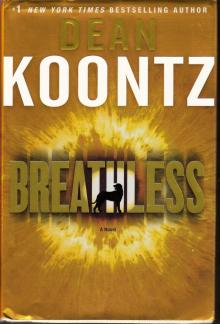 Breathless
Breathless Lightning
Lightning The Taking
The Taking The Door to December
The Door to December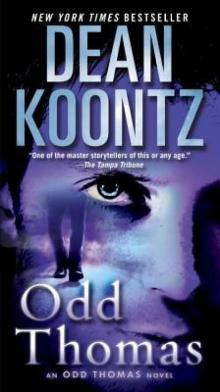 Odd Thomas
Odd Thomas Midnight
Midnight Whispers
Whispers Odd Interlude #2
Odd Interlude #2 The Mask
The Mask Watchers
Watchers By the Light of the Moon
By the Light of the Moon Night Chills
Night Chills Brother Odd
Brother Odd False Memory
False Memory The Darkest Evening of the Year
The Darkest Evening of the Year Life Expectancy
Life Expectancy The Good Guy
The Good Guy Hideaway
Hideaway Innocence
Innocence Your Heart Belongs to Me
Your Heart Belongs to Me Forever Odd
Forever Odd Intensity
Intensity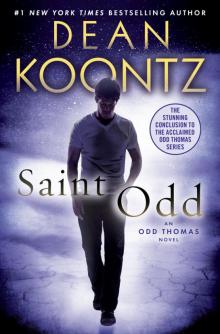 Saint Odd
Saint Odd Dragon Tears
Dragon Tears The Husband
The Husband Final Hour
Final Hour Demon Seed
Demon Seed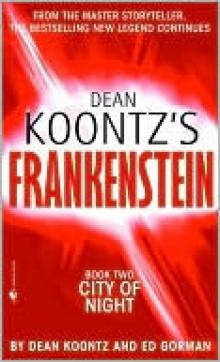 City of Night
City of Night From the Corner of His Eye
From the Corner of His Eye A Big Little Life: A Memoir of a Joyful Dog
A Big Little Life: A Memoir of a Joyful Dog Seize the Night
Seize the Night Winter Moon
Winter Moon Strange Highways
Strange Highways The Silent Corner
The Silent Corner Twilight Eyes
Twilight Eyes Velocity
Velocity The Bad Place
The Bad Place Cold Fire
Cold Fire The Whispering Room
The Whispering Room Ricochet Joe
Ricochet Joe The Crooked Staircase
The Crooked Staircase Tick Tock
Tick Tock The Face
The Face Sole Survivor
Sole Survivor Strangers
Strangers Deeply Odd
Deeply Odd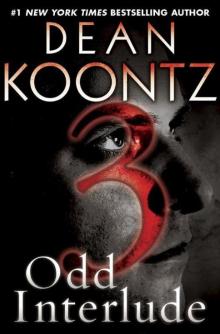 Odd Interlude #3
Odd Interlude #3 The Vision
The Vision Phantoms
Phantoms Prodigal Son
Prodigal Son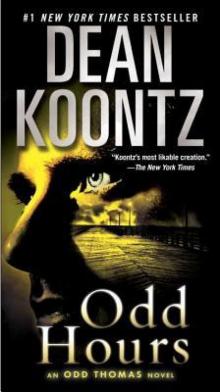 Odd Hours
Odd Hours Last Light
Last Light Fear Nothing
Fear Nothing Odd Interlude #1
Odd Interlude #1 One Door Away From Heaven
One Door Away From Heaven Koontz, Dean R. - Mr. Murder
Koontz, Dean R. - Mr. Murder The City
The City The Dead Town
The Dead Town The Voice of the Night
The Voice of the Night Dark Rivers of the Heart
Dark Rivers of the Heart The Key to Midnight
The Key to Midnight Lost Souls
Lost Souls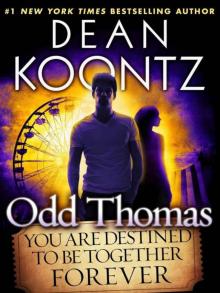 Odd Thomas: You Are Destined To Be Together Forever
Odd Thomas: You Are Destined To Be Together Forever Odd Apocalypse
Odd Apocalypse Icebound
Icebound The Book of Counted Sorrows
The Book of Counted Sorrows The Neighbor
The Neighbor Ashley Bell
Ashley Bell Santa's Twin
Santa's Twin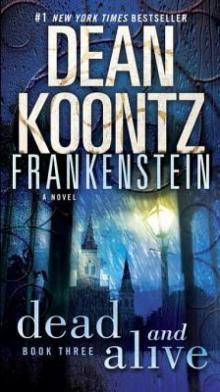 Dead and Alive
Dead and Alive The Eyes of Darkness
The Eyes of Darkness The Odd Thomas Series 4-Book Bundle
The Odd Thomas Series 4-Book Bundle Writing Popular Fiction
Writing Popular Fiction City of Night f-2
City of Night f-2 Dean Koontz's Frankenstein 4-Book Bundle
Dean Koontz's Frankenstein 4-Book Bundle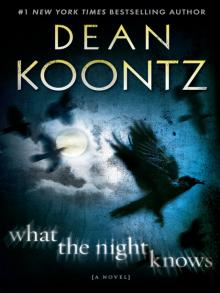 What the Night Knows: A Novel
What the Night Knows: A Novel Demon Child
Demon Child Starblood
Starblood Surrounded mt-2
Surrounded mt-2 Odd Interlude #3 (An Odd Thomas Story)
Odd Interlude #3 (An Odd Thomas Story)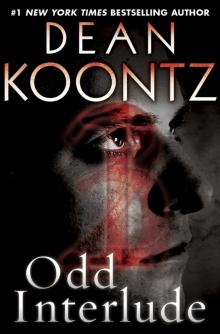 Odd Interlude
Odd Interlude The Odd Thomas Series 7-Book Bundle
The Odd Thomas Series 7-Book Bundle The City: A Novel
The City: A Novel Deeply Odd ot-7
Deeply Odd ot-7 Odd Interlude #1 (An Odd Thomas Story)
Odd Interlude #1 (An Odd Thomas Story) The House of Thunder
The House of Thunder Odd Interlude ot-5
Odd Interlude ot-5 Fear That Man
Fear That Man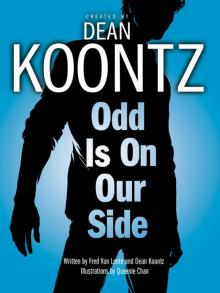 Odd Is on Our Side
Odd Is on Our Side Relentless
Relentless A Big Little Life
A Big Little Life Hanging On
Hanging On The Forbidden Door
The Forbidden Door Dragonfly
Dragonfly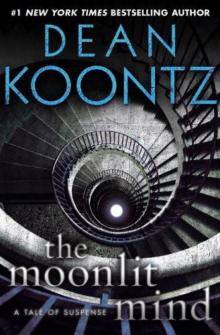 The Moonlit Mind: A Tale of Suspense
The Moonlit Mind: A Tale of Suspense Final Hour (Novella)
Final Hour (Novella) The Odd Thomas Series 4-Book Bundle: Odd Thomas, Forever Odd, Brother Odd, Odd Hours
The Odd Thomas Series 4-Book Bundle: Odd Thomas, Forever Odd, Brother Odd, Odd Hours Odd Interlude (Complete)
Odd Interlude (Complete)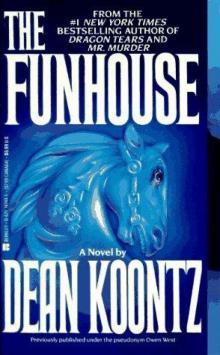 The Funhouse
The Funhouse 77 Shadow Street
77 Shadow Street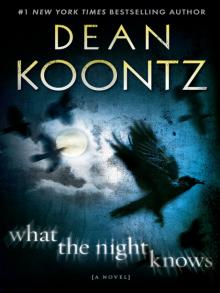 What the Night Knows
What the Night Knows Deeply Odd: An Odd Thomas Novel
Deeply Odd: An Odd Thomas Novel The Servants of Twilight
The Servants of Twilight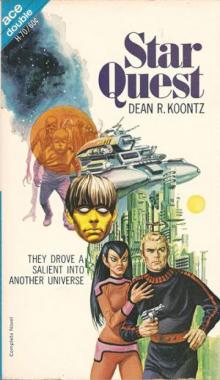 Star quest
Star quest Frankenstein Dead and Alive: A Novel
Frankenstein Dead and Alive: A Novel Chase
Chase Eyes of Darkness
Eyes of Darkness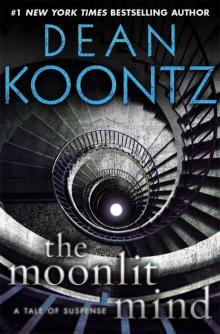 The Moonlit Mind: A Tale of Suspense (Kindle Single)
The Moonlit Mind: A Tale of Suspense (Kindle Single) Sussurri
Sussurri The Moonlit Mind (Novella)
The Moonlit Mind (Novella) Frankenstein: Lost Souls - A Novel
Frankenstein: Lost Souls - A Novel![Ricochet Joe [Kindle in Motion] (Kindle Single) Read online](http://i1.bookreadfree.com/i2/04/05/ricochet_joe_kindle_in_motion_kindle_single_preview.jpg) Ricochet Joe [Kindle in Motion] (Kindle Single)
Ricochet Joe [Kindle in Motion] (Kindle Single) Innocence: A Novel
Innocence: A Novel Beastchild
Beastchild A Darkness in My Soul
A Darkness in My Soul Oddkins: A Fable for All Ages
Oddkins: A Fable for All Ages The Frankenstein Series 5-Book Bundle
The Frankenstein Series 5-Book Bundle Frankenstein - City of Night
Frankenstein - City of Night Shadowfires
Shadowfires Last Light (Novella)
Last Light (Novella) Frankenstein - Prodigal Son
Frankenstein - Prodigal Son Ticktock
Ticktock Dance with the Devil
Dance with the Devil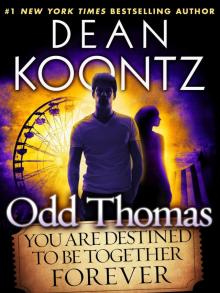 You Are Destined to Be Together Forever (Short Story)
You Are Destined to Be Together Forever (Short Story) The Moonlit Mind (Novella): A Tale of Suspense
The Moonlit Mind (Novella): A Tale of Suspense Darkness Under the Sun
Darkness Under the Sun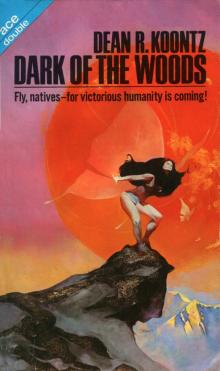 Dark Of The Woods
Dark Of The Woods Dean Koontz's Frankenstein
Dean Koontz's Frankenstein Frankenstein
Frankenstein The Face of Fear
The Face of Fear Children of the Storm
Children of the Storm Mr. Murder
Mr. Murder